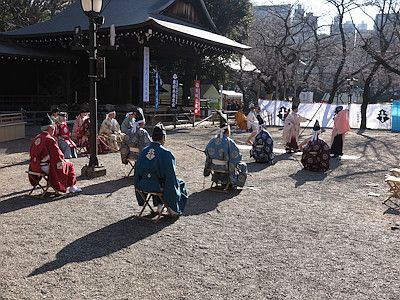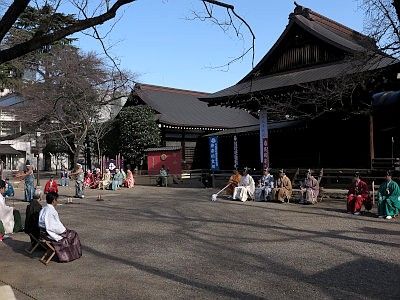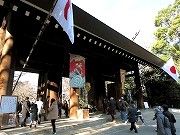 Yasukuni Jinja (靖国神社) is a Shinto shrine dedicated mainly to war-dead soldiers (about Yasukuni Shrine). It is one of the largest Shinto shrines in Tokyo proper, and maintains a complex constructed before WWII.
Yasukuni Jinja (靖国神社) is a Shinto shrine dedicated mainly to war-dead soldiers (about Yasukuni Shrine). It is one of the largest Shinto shrines in Tokyo proper, and maintains a complex constructed before WWII.
Hatsumode (初詣), the first visit to a Shinto shrine (or a major Buddhist temple) of the year, is a traditional custom widely-practiced in New Year throughout Japan. The most popular site for hatsumode in Tokyo is Meiji Shrine (明治神宮), which attracts more than 3 million worshippers during the first three days of the year, and Sensoji Temple (浅草寺), which attracts close to 3 million during the same period. As for Yasukuni Shrine, about 0.25 million people visit the shrine to pay respect. During this period, music perfomances and martial arts demonstrations are conducted at this shrine during this period.
Hours
The Shinmon gate opens at 11:30 on the evening of Dec 31 and closes at 6pm on Jan 1. From Jan 2 through 3, the gate opens at 6am and closes at 6pm. And from Jan 4, the opening hours will be 6am-5pm.
Events
A large kite and a large hagoita on display
At the Shimon gate, a large kite (1.6 meters * 3.1 meters) and a large hagoita (2 meters high) are exhibited. A hagoita is a wooden paddle which is used like a racket to play hanetsuki, a badminton-ish game. Hanetsuki and kite flying were often played during New Year's holiday (but not so much in recent days).

A kite and a hagoita on display
At the Shimon gate, a large kite (1.6 meters * 3.1 meters) and a large hagoita (2 meters high) are exhibited. A hagoita is a wooden paddle which is used like a racket to play hanetsuki, a badminton-ish game. Hanetsuki and kite flying were often played during New Year's holiday (but not so much in recent days).
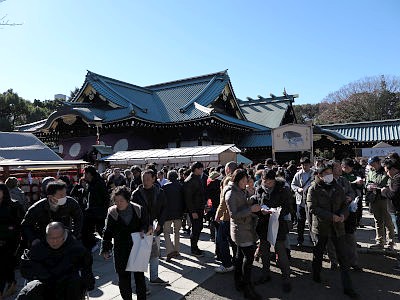
A large ema picture (2.19 meters * 2.76 meters) is on display beside the Haiden (The photo above is that of 2016. For 2017, it was on the right side of the Haiden).
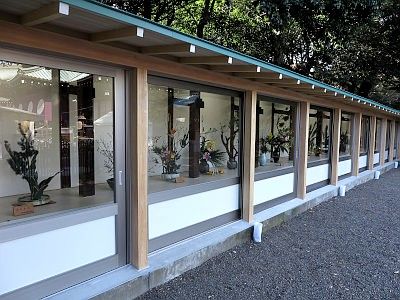
Ikebana is traditional Japanese flower arrangement.
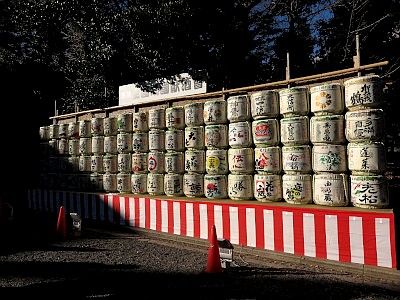
Performances at Nogakudo
During the New Year holidays, many performances are devoted at the Nogakudo stage.
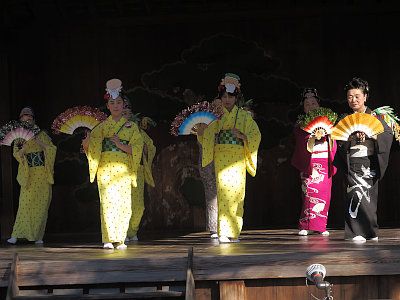
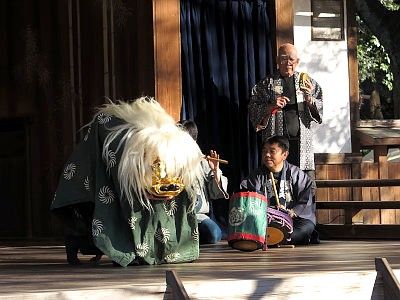
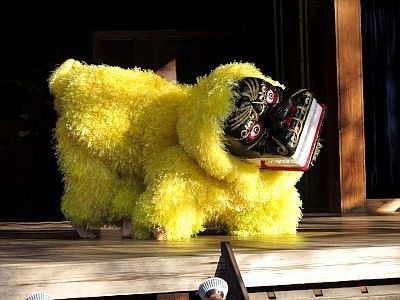
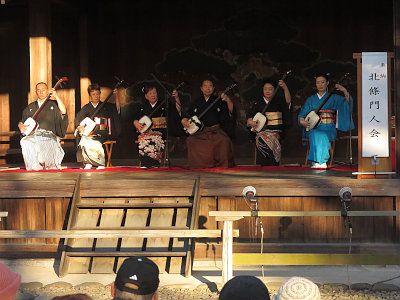
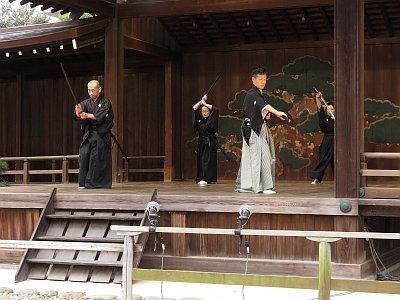
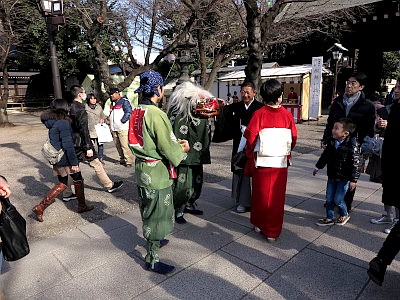
Other than performance at the Nogakudo stage, shishimai (lion dance) is also performed along the main approach in the shrine precincts from Jan 1 to 4.
Sansankutebasami-shiki
Sansankutebasami-shiki, which is perfomed from 10am of January 3rd, is a traditional archery ceremony conducted by archers clad in tradtional outfit.
In the feudal times, this ritual was perfomed by samurai on the forth day of the new year to celebrate peace.
